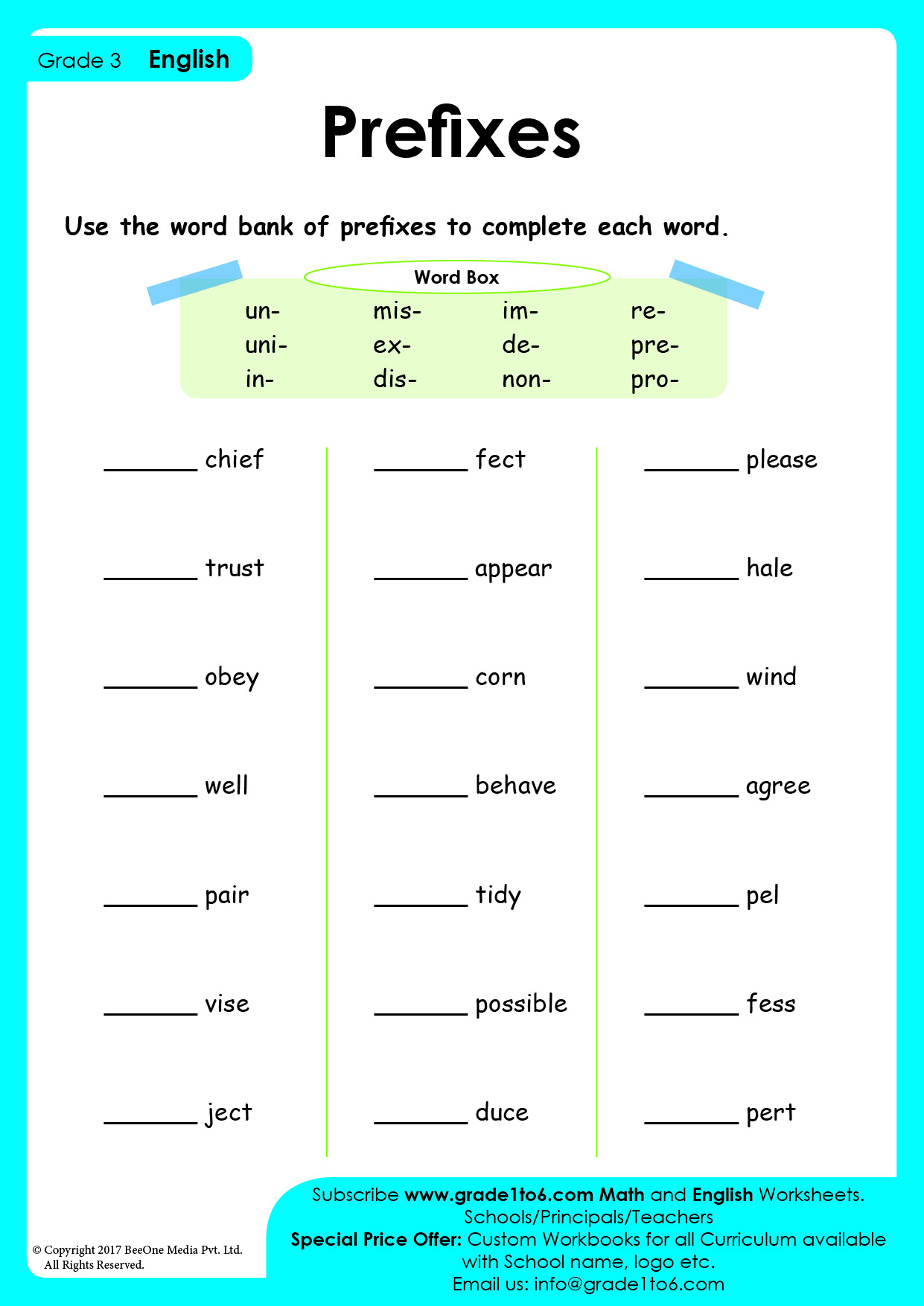
Unlocking Language Potential: The Power of Grammar Worksheets: Prefixes
In the intricate tapestry of the English language, vocabulary stands as a fundamental thread, weaving together meaning and understanding. For learners, mastering a vast lexicon can seem like a monumental task, but what if there was a powerful shortcut, a key that unlocks the meaning of thousands of words? Enter prefixes. These small but mighty linguistic units, when understood, can dramatically expand a learner’s vocabulary, enhance reading comprehension, and improve writing fluency. And at the heart of building this crucial skill set lies an invaluable educational tool: Grammar Worksheets: Prefixes.
This article delves into the profound importance of prefixes in language acquisition and explores why Grammar Worksheets: Prefixes are not just supplementary materials, but essential components of an effective language learning curriculum. We will examine the mechanics of prefixes, their impact on word meaning, the types of activities that make these worksheets so effective, and best practices for their implementation in various educational settings.
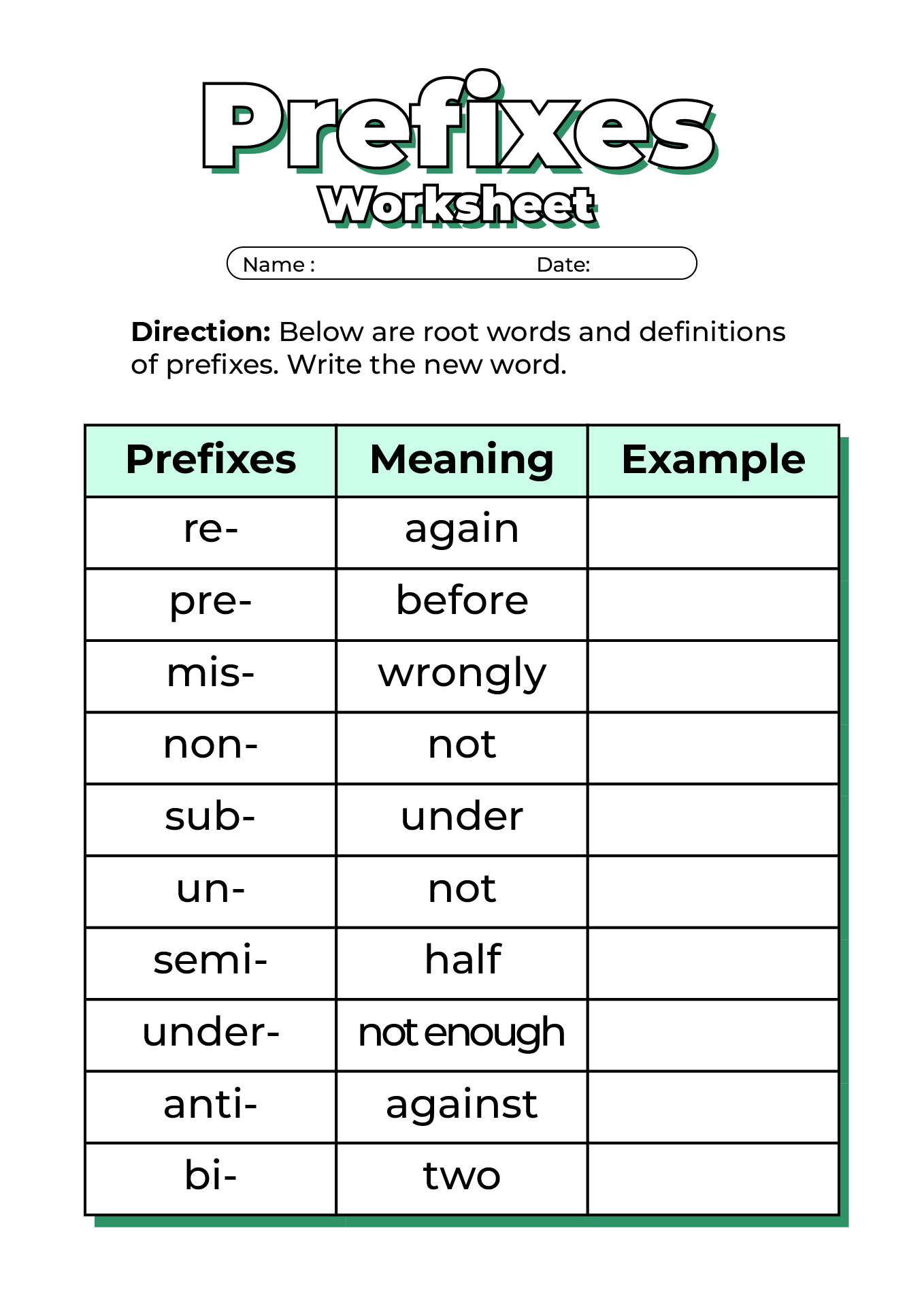
Understanding Prefixes: The Building Blocks of Meaning
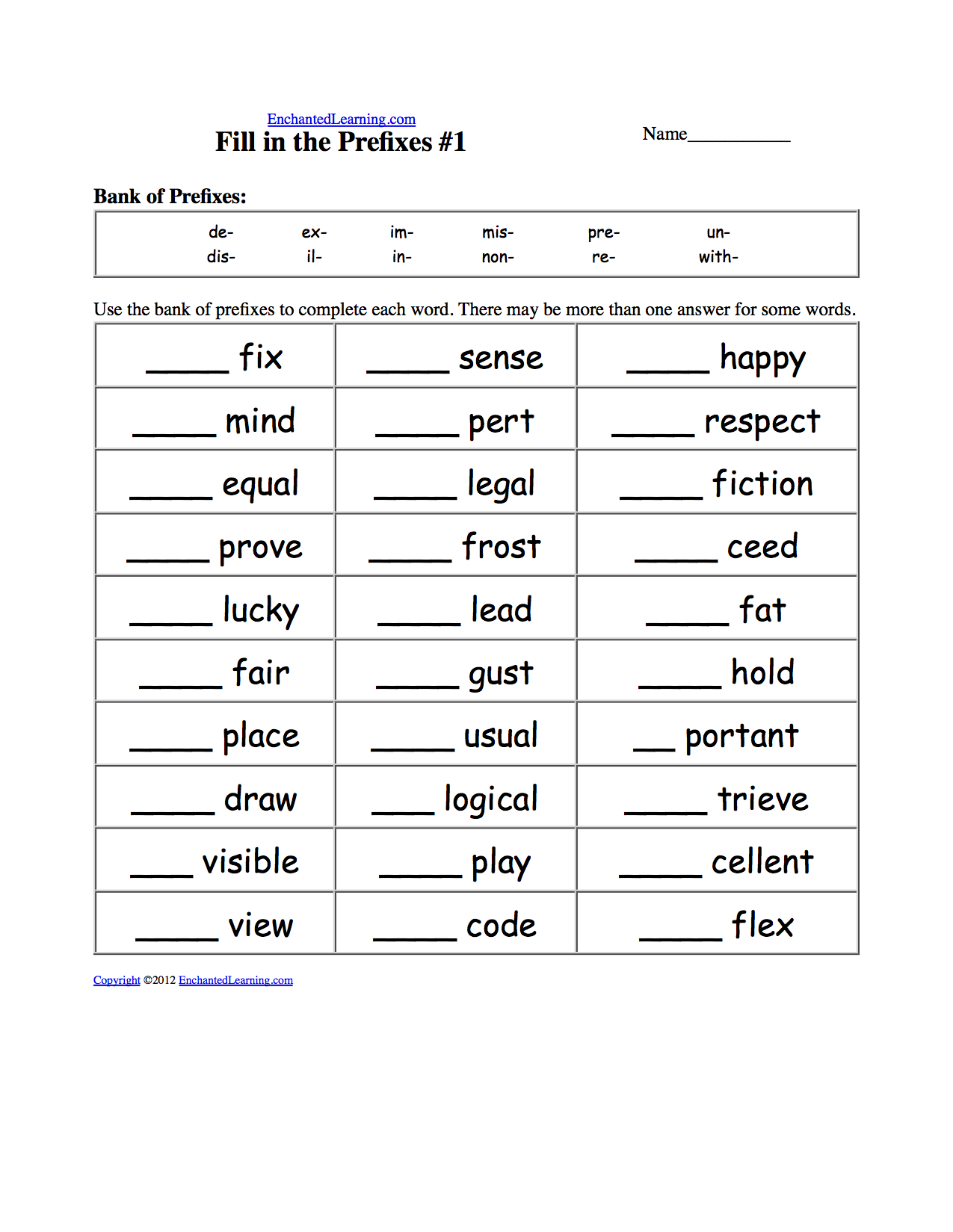
A prefix is a group of letters placed at the beginning of a word to change its meaning. It is not a word on its own but adds a specific nuance or transformation to the base word (or root word) it attaches to. For instance, consider the base word "happy." By adding the prefix "un-", we get "unhappy," which means "not happy." The simple addition of "un-" completely reverses the original meaning.

The beauty of prefixes lies in their systematic nature. Once a learner understands the meaning of common prefixes, they gain the ability to decipher the meaning of countless new words without needing to look each one up individually. This skill is akin to having a built-in dictionary, making them more independent and confident readers and writers. This foundational understanding is precisely what well-designed Grammar Worksheets: Prefixes aim to cultivate.
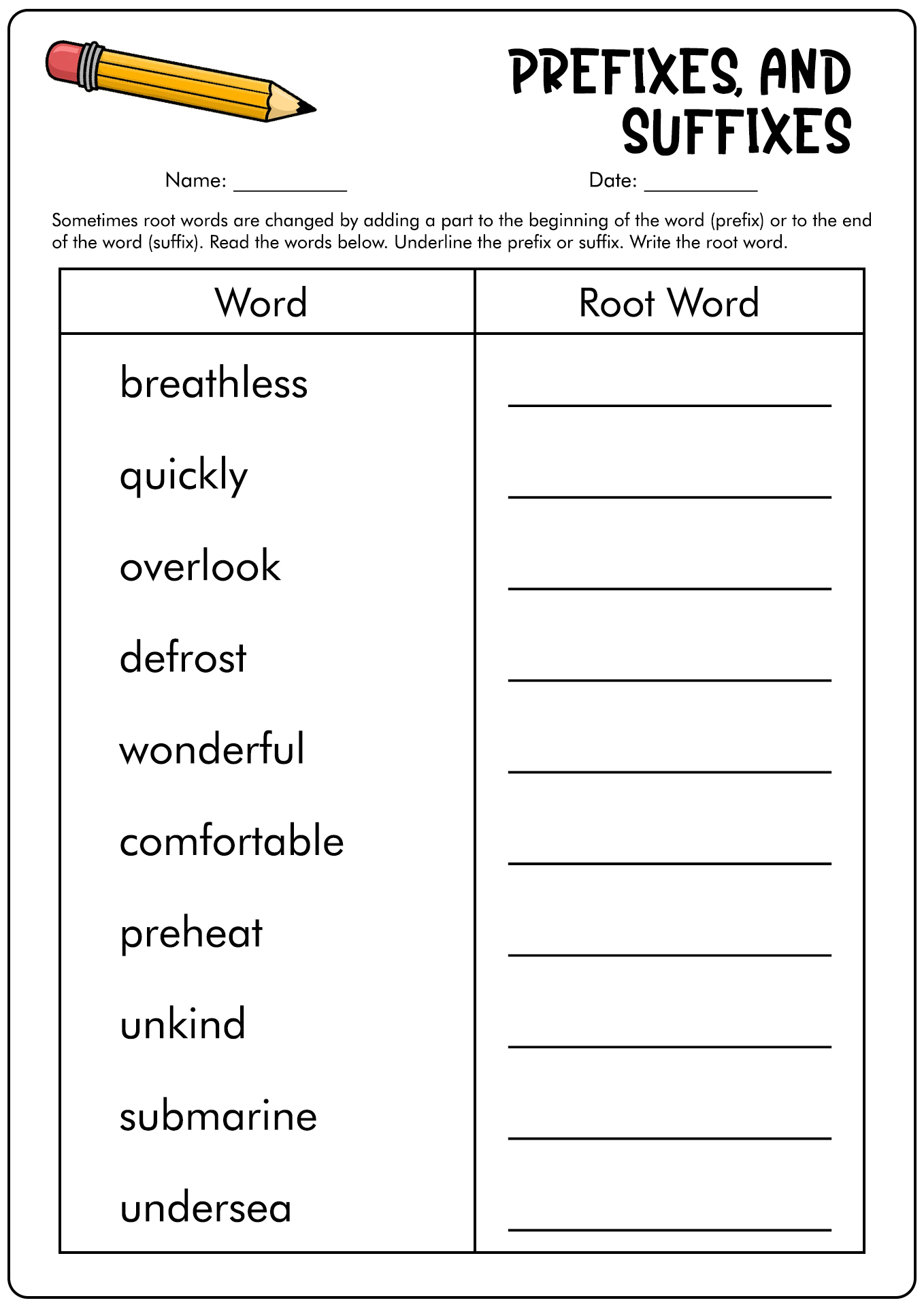
Common prefixes carry consistent meanings:

- re-: again (e.g., rewrite, replay, rebuild)
- un-: not, opposite of (e.g., unhappy, undo, unbelievable)
- pre-: before (e.g., preview, preheat, prepay)
- dis-: not, opposite of, away (e.g., disagree, disappear, dishonest)
- mis-: wrongly, badly (e.g., misunderstand, misspell, mislead)
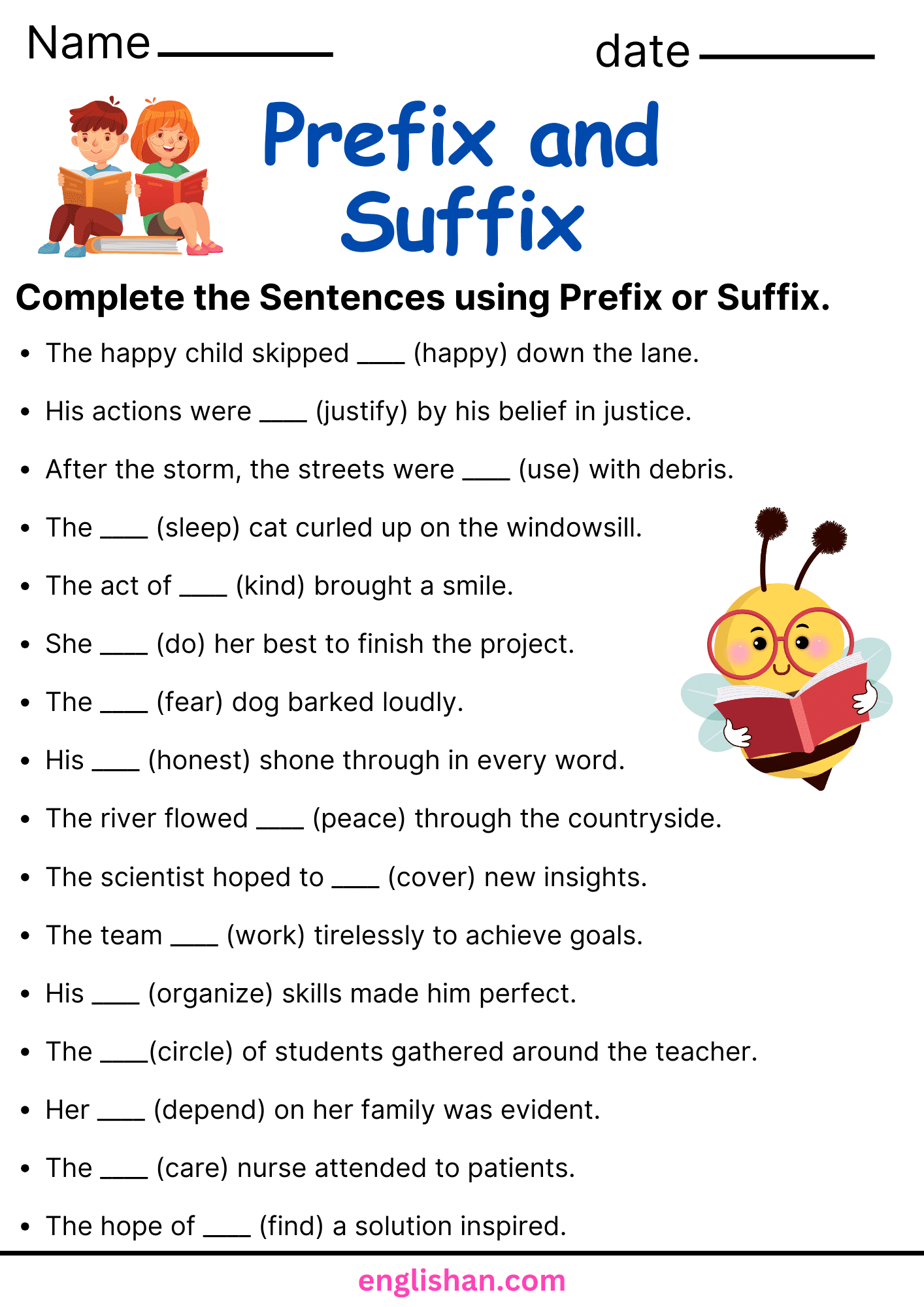

And there are many, many more. The consistent application of these meanings across various root words makes prefixes an incredibly efficient avenue for vocabulary expansion.
The Indispensable Role of Grammar Worksheets: Prefixes

In an age dominated by digital learning tools, the humble worksheet might sometimes be overlooked. However, when it comes to mastering specific grammatical concepts like prefixes, Grammar Worksheets: Prefixes offer a structured, tangible, and highly effective learning experience. They provide:
- Focused Practice: Worksheets allow learners to concentrate solely on the target skill – identifying prefixes and understanding their impact on word meaning – without distractions.
- Reinforcement and Repetition: Repetition is key to mastery. Worksheets provide ample opportunities for learners to encounter and apply prefixes multiple times in different contexts, solidifying their understanding.
- Active Learning: Rather than passively receiving information, learners actively engage with the material by writing, matching, choosing, and creating words. This active engagement enhances retention.
- Pattern Recognition: Through varied exercises, learners begin to recognize patterns in how prefixes modify words, fostering a deeper, more intuitive grasp of word formation.
- Assessment Tool: For educators, worksheets serve as quick and effective assessment tools, allowing them to gauge student comprehension and identify areas that require further instruction.

Crafting Effective Grammar Worksheets: Prefixes
Not all worksheets are created equal. Effective Grammar Worksheets: Prefixes are carefully designed to maximize learning outcomes. Here are key elements and activity types that make them successful:
-
Clear Instructions: Each activity should have concise, easy-to-understand instructions.
-
Gradual Progression: Start with simpler concepts (e.g., identifying prefixes) and move to more complex ones (e.g., using prefix words in sentences, understanding nuanced meanings).
-
Variety of Activities: To maintain engagement and cater to different learning styles, incorporate diverse task types:
- Matching: Match prefixes to their meanings (e.g., re- = again).
- Word Building: Combine prefixes with root words to form new words (e.g., un- + happy = unhappy).
- Definition Matching: Match words with prefixes to their correct definitions.
- Fill-in-the-Blanks: Complete sentences using appropriate words with prefixes.
- Sentence Creation: Write original sentences using given prefix words.
- Prefix Identification in Context: Read a short passage and identify all words containing prefixes.
- Error Correction: Identify and correct misused prefix words in sentences.
- Contextual Clues: Use sentences where the context helps infer the meaning of a prefix word.
- Prefix Families: Group words by common prefixes (e.g., rebuild, restart, return).
-
Contextualization: Whenever possible, present prefix words within sentences or short paragraphs. This helps learners see how the words are used in real-world contexts, rather than just as isolated vocabulary items.
-
Visual Appeal: For younger learners, engaging layouts, clear fonts, and relevant images can enhance the learning experience.
Common Prefixes and Their Impact: A Deeper Dive
To illustrate the power of prefixes and the content often found in effective Grammar Worksheets: Prefixes, let’s explore some of the most common ones and their transformative effects:
-
re- (again, back): This ubiquitous prefix signals repetition or restoration.
- Examples: rebuild, return, rewrite, recycle, review. Understanding "re-" immediately clarifies that "rebuild" means to build again, and "review" means to look over something again.
-
un- (not, opposite of): One of the most frequently encountered prefixes, "un-" negates the meaning of the base word.
- Examples: unhappy, untie, unbelievable, unkind, unpack. This prefix is incredibly versatile, applying to adjectives, verbs, and even some nouns.
-
dis- (not, opposite of, away): Similar to "un-", "dis-" can indicate negation or separation.
- Examples: disagree, disappear, dishonest, disconnect, dislike. The meaning depends on the root; "disagree" means not to agree, while "disappear" means to go away.
-
pre- (before): This prefix indicates something that occurs or exists prior to something else.
- Examples: preview, preheat, prepay, predict, precaution. "Preheat" clearly tells you to heat something before cooking, and "predict" means to say what will happen before it occurs.
-
mis- (wrongly, badly): This prefix denotes error or incorrect action.
- Examples: misunderstand, misspell, mislead, misuse, misfortune. It highlights the negative or incorrect nature of the action described by the root word.
-
anti- (against, opposite): Often used in scientific or political contexts, "anti-" signifies opposition.
- Examples: antisocial, antibody, anticlockwise, antifreeze, antibiotic.
-
co- (with, together): This prefix indicates collaboration or togetherness.
- Examples: cooperate, coexist, copilot, coauthor, coworker.
-
sub- (under, below): "Sub-" suggests something beneath or secondary.
- Examples: submarine, subway, submerge, subordinate, subtitle.
-
inter- (between, among): This prefix implies a connection or relationship between two or more entities.
- Examples: international, internet, interact, interview, interrupt.
-
super- (above, beyond, excessively): "Super-" denotes something superior, exceeding, or overly done.
- Examples: superman, supervise, superstar, supernatural, supersize.
-
trans- (across, beyond, through): This prefix suggests movement or change from one state/place to another.
- Examples: transport, transform, transatlantic, transcribe, transparent.
By systematically introducing and practicing these prefixes through structured exercises, Grammar Worksheets: Prefixes empower learners to decode a vast portion of the English lexicon.
Implementing Grammar Worksheets: Prefixes in the Classroom and Beyond
For educators, incorporating Grammar Worksheets: Prefixes into lesson plans requires thoughtful consideration:
- Pre-teaching: Always introduce the prefix’s meaning and provide examples before handing out worksheets. A brief mini-lesson sets the stage.
- Guided Practice: Work through the first few exercises together as a class or in small groups. This allows for immediate clarification and builds confidence.
- Independent Work: Allow students time to complete worksheets independently, fostering self-reliance.
- Differentiation: Offer varied levels of difficulty. Some learners might benefit from simpler matching tasks, while others are ready for complex sentence creation. Provide extension activities for advanced learners (e.g., researching other words with the same prefix).
- Integration: Don’t isolate prefix learning. Encourage students to identify prefixes in their reading materials, use prefix words in their writing assignments, and discuss how prefixes change meaning during vocabulary lessons.
- Review and Assessment: Regularly review previously learned prefixes. Use worksheets as a formative assessment to identify areas of strength and weakness.
Beyond the traditional classroom, parents and self-learners can also greatly benefit from utilizing Grammar Worksheets: Prefixes. They provide a structured way to practice vocabulary, reinforcing concepts learned from books, online courses, or language learning apps.
The Long-Term Benefits of Mastering Prefixes
The investment in learning prefixes, significantly aided by consistent work with Grammar Worksheets: Prefixes, yields substantial long-term benefits:
- Enhanced Reading Comprehension: When faced with an unfamiliar word, a learner who understands prefixes can often infer its meaning, leading to smoother reading and better comprehension of texts.
- Expanded Vocabulary: This is the most direct benefit. A solid understanding of common prefixes can unlock the meaning of thousands of words.
- Improved Writing Skills: A richer vocabulary allows for more precise and varied expression, leading to more sophisticated and impactful writing.
- Increased Confidence: The ability to independently decode new words boosts a learner’s confidence in their language abilities, encouraging them to tackle more challenging texts and communicate more freely.
- Critical Thinking Skills: Analyzing words for their prefixes and root words encourages a deeper, more analytical approach to language, fostering critical thinking.
In conclusion, prefixes are not merely an arcane corner of grammar; they are powerful linguistic tools that empower learners to navigate the English language with greater ease and proficiency. And in the journey to master these essential building blocks, Grammar Worksheets: Prefixes stand out as an indispensable resource. They provide the structured practice, active engagement, and focused reinforcement necessary to transform a basic understanding into a profound command of vocabulary. By integrating these valuable worksheets into language learning strategies, educators and learners alike can unlock a world of words, paving the way for richer communication and deeper comprehension.
